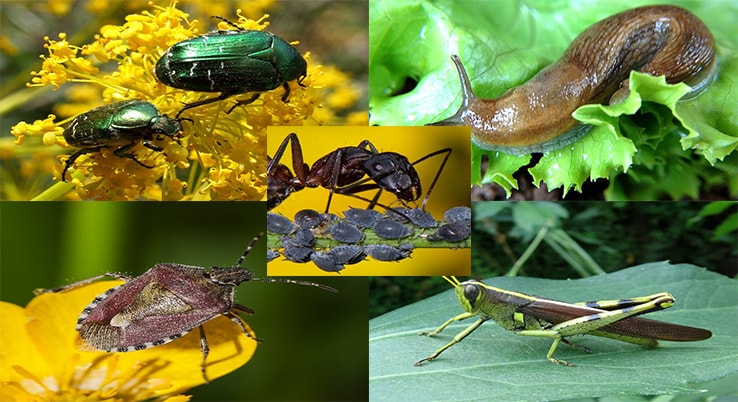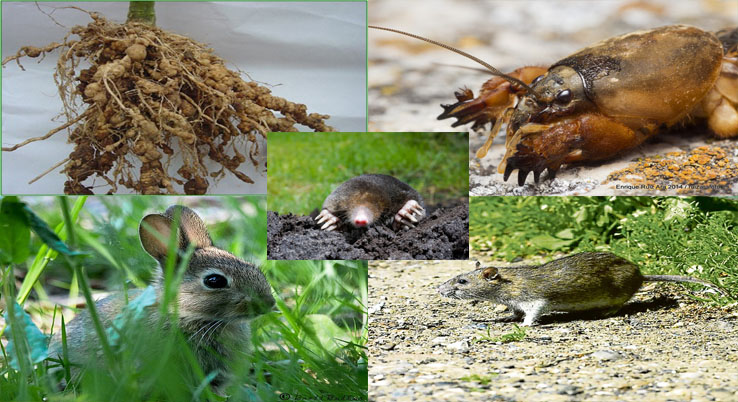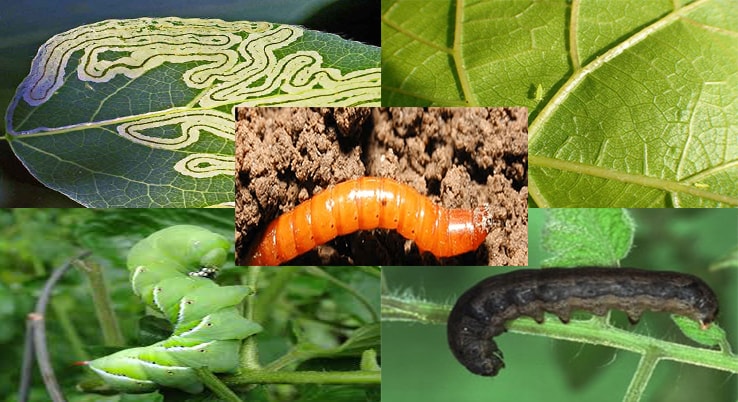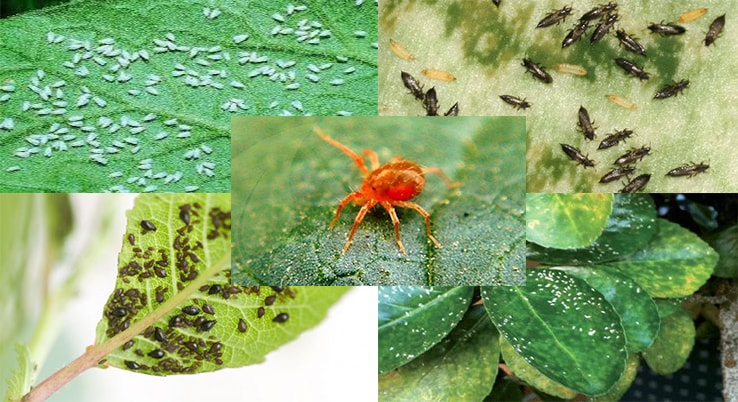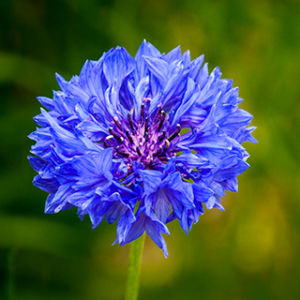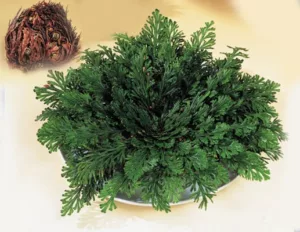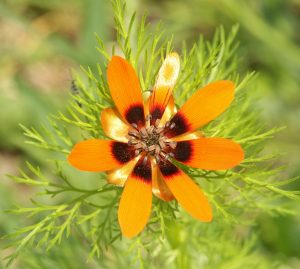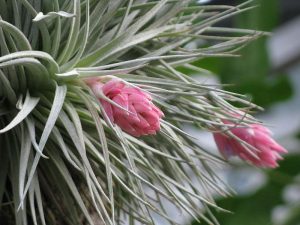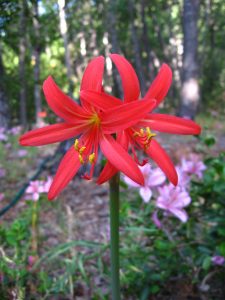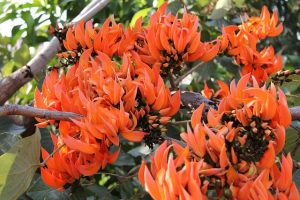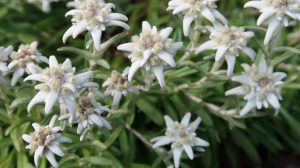Types of pests: snails, ants, grasshoppers, cetonia and insect bugs
Today we will continue to delve into the types of pests that affect our plants. This article will be devoted to the types of pests from 11 to 15 of the following image.
Types of pests:

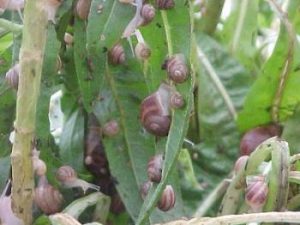
11. Snails and slugs
Snails and slugs are among the most unpleasant garden pests. The symptoms are very similar to those caused by caterpillars. They differ because the snails and slugs leave a silvery trace of mucosa when crawling. During the day they remain hidden and leave at dusk or on cloudy days, mainly after a rain or watering. These types of pests leave holes in the leaves and flowers of many fruits and succulents. The structure and biology of snails and slugs is similar, except slugs do not have the outer spiral shell.
Its control requires diligence and an integrated method that includes the elimination of hiding places and humid places, the use of traps and barriers and removing them by hand. Bait traps can be useful, but by themselves, they do not provide enough control in gardens that offer plenty of shelter, food and moisture.
Trap for snails and slugs
Methods to eradicate them:
- Pour some beer into a cup and bury it leaving your top uncovered. The smell attracts them, they will fall into the cup and they will drown. It also works with a mixture of water, sugar and yeast.
- They also fight with granulated Metaldehyde baits that must be distributed at dusk and always after a watering.
- Use barriers that prevent the progress of snails and slugs. They hate copper, so we can surround crops with wire or copper wire during the time they are most active.
- Sprinkle ash around the bases of these, bits of eggshell, gravel, sand, sawdust, pinnace or even ground coffee, this deters the snails and slugs at the time of moving forward.
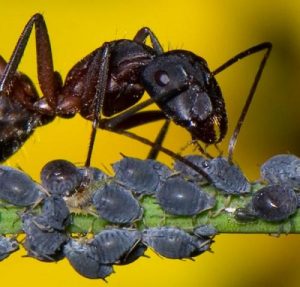
12. Ants
Its presence in plants is generally due to the presence of aphids or cochineals, from whose sugary excretions they feed. To the plants the ants do not do anything to them, the damage is indirect when protecting and favoring the Aphids, acting with them as real “nannies”.
To eradicate them, first eliminate the aphids, then locate the anthills and apply an anti-ant product on them. For your control you can also use the lemon juice, squeeze a lemon and paint with your juice the throne and / or the invaded branches. The scent of lemon is unpleasant. You can also make a row of salt along your favorite paths.
Ecological spray for pest control
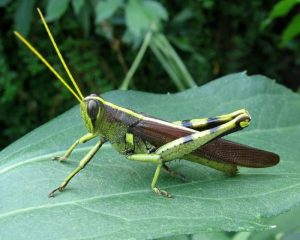
13. Grasshoppers and locusts
These insects can appear at any time, being able to devour the plants totally or partially. The damage is punctual, but sometimes it is necessary to treat with insecticide. The locust is an insect that can become very voracious and destructive to the environment.
To avoid damaging your garden you can take any of these measures:
- Spray your garden with spicy pepper wax insect repellent, its flavor will make the leaves of your garden inedible without damaging them.
- Look for a natural insecticide that has NIM as an active ingredient in its formula.
- Try to get Ecobran, it is a product that only affects crickets and other related insects, without harming other animals that visit your garden.
14. Cetonias (Cetonia aurata)
They are very pretty beetles, bright golden green, seeking pollen and devouring flowers, buds, leaves and buds. Adult beetles eat flowers while larvae do no harm. It is not usually necessary to perform any treatment. In addition, they can be easily captured by hand in case of appreciable infestation.
Only if they are very abundant insecticide should be used, for example Baytroid, Bayer, Polyvalent Insecticides, Compo or Algoflash, etc.
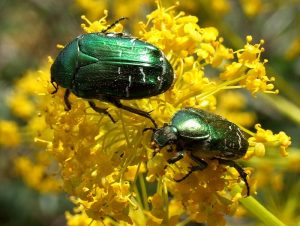
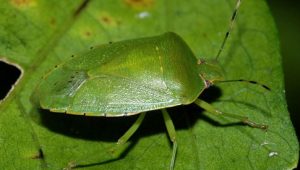
15. Insect bugs (Nezara)
These types of pests introduce a peak in the vegetable to absorb their juices, feed on leaves, fruits and vegetables, producing the necrosis of the cells traversed by said peak.
Green bugs emit an unpleasant odor to protect themselves from predators, so it is convenient not to crush them but try to manually remove their eggs.
To eliminate it you can use the spray with soap that we have recommended in previous articles. In addition you can use the Pyrethrum, this is an extreme remedy to eradicate a plague of bed bugs in your garden. Pyrethrum is the only insecticide allowed by organic farming. Even so, it is still a very powerful product, which should be used with extreme caution.
As you can see there are many pests that could affect our plants, so we must be aware of them. The detection and elimination of the types of pests before they damage our garden is in our hands. A healthy garden and flowers will gladden the heart. ?
Remember to like and share on your social networks if you liked this article. Leave us your comments here.
![]()
Share this content:
